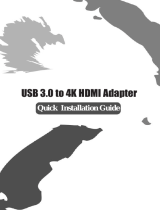
3
Important Operating Considerations for Safety
• Refer to this guide for proper startup and shutdown procedures.
• Follow all warnings and cautions in this manual and on the projector.
• Do not block the lens with any object
while the projector is being used.
Blocking the light path can cause overheating and result in fire.
• Place the projector in a horizontal position no greater than 8 degrees off
axis.
• Locate the projector at least 4' (1.2m) away
from any heating or cooling
vents.
• Do not block ventilation openings. Locate the projector in a well-
ventilated area without obstructions to intake or exhaust vents. Do not
place the projector on a tablecloth or other soft covering that may block
the vents.
• Do not place the projector in direct sunlight, humid, greasy or dusty
places or in places where the projector may come into contact with
smoke or steam.
• Do not look directly into the lens while the projector is being used.
• Do not drop the projector.
• Do not spill liquid on the projector. Spilled liquid may damage the
projector.
• Use the power cord provided. Connect
the power cord to a receptacle
with a protective safety (earth) ground terminal. A surge-protected
power strip is recommended.
• Do not overload wall outlets.
• When disconnecting the power cord, hold the plug, not the cord.
• Wash hands after handling the cables
supplied with this product.
• The projector remote control uses batteries. Make sure the batteries’
polarity (+/-) is
aligned correctly. Dispose of used batteries in
accordance with local disposal laws.
• Use an InFocus approved ceiling mount kit for proper fitting,
ventilation and installation. The warranty does not cover any damage
caused by use of non-approved ceiling mount kits or by installing in an
improper location.
• When the projector is ceiling mounted
, wear protective eyewear to
prevent eye injury before opening lamp door.
• The projector must be installed by a
qualified professional in order to
ensure proper operation and reduce the risk of hazards or injury. It is
not recommended you install the projector yourself.
• Refer all service to qualified service personnel. Servicing your own
projector can be dangerous to you and will void the warranty.
• Only use replacement parts specified by InFocus. Unauthorized
substitutions may result in fire, electrical shock, or injury, and may
void the warranty
• Only genuine InFocus lamps are tested for use in this projector. Use of
non InFocus lamps may cause electrical shock and fire, and may void
the projector warranty.
•
Hg – Lamp contains mercury. Manage in accordance with local
disposal laws. See www.lamprecycle.org.
• The projector uses a high-pressure mercury glass lamp. The lamp may
fail prematurely, or it may rupture with a popping sound if jolted,
scratched, or handled while hot. The risk of lamp failure or rupture
also increases as the lamp age increases; please replace the lamp when
you see the “Replace Lamp” message.
• In the unlikely event of a lamp rupture, particles may exit through the
projector
vents. Keep people, food, and drinks out of the "keep out"
area under and around the projector, as indicated by the "X" areas
below..
3’ / 1 m




















